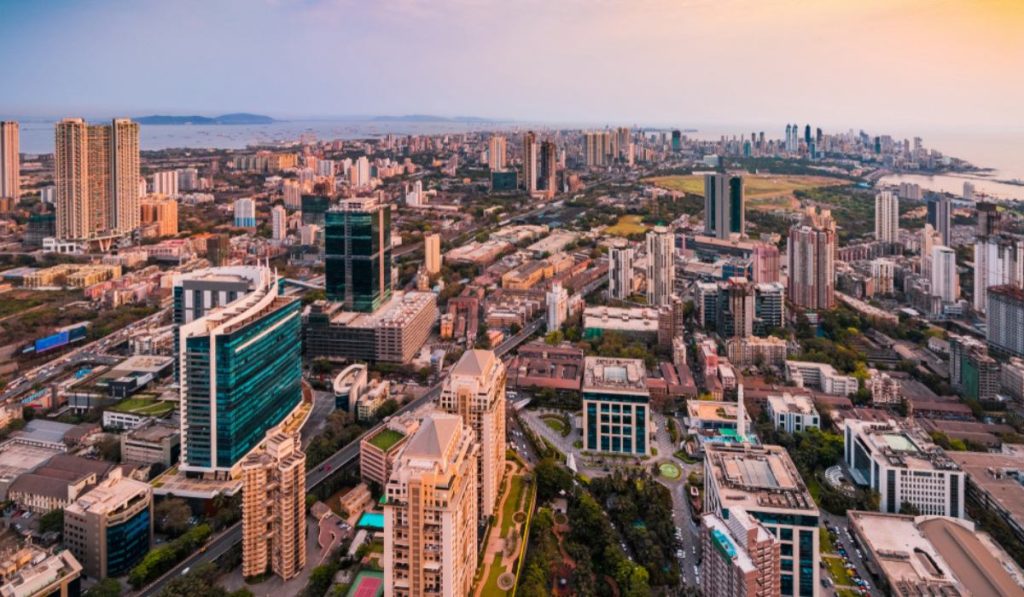Unveiling the Essence of Development Control and Promotion Regulations (DCPR)
In the realm of urban development, a key player often quietly shapes the landscapes we inhabit – Development Control and Promotion Regulations, or DCPR. This complex framework influences the way cities grow, the allocation of spaces, and the coexistence of diverse functions. With cities expanding at an unprecedented pace, understanding DCPR becomes pivotal to crafting sustainable, functional urban environments.
Key Components of DCPR: Delving into the Building Blocks

Zoning Regulations: Carving Urban Zones for Functionality and Harmony
At the heart of DCPR lie zoning regulations, a critical facet that delineates different sections of a city for distinct purposes. Zoning helps create a harmonious coexistence between residential, commercial, industrial, and recreational spaces. By strategically segregating zones, cities can strike a balance between various needs while preventing haphazard growth. For instance, residential areas are protected from industrial noise, promoting a better quality of life.
Urban planners leverage zoning to foster organized urban growth, optimize resource allocation, and mitigate conflicts between incompatible land uses. Each zone comes with its set of regulations – from permissible building heights to land use. This meticulous zoning framework underpins the visual and functional character of a city.
Floor Space Index (FSI): Measuring Density and Potential
A quintessential element within DCPR, the Floor Space Index (FSI) plays a pivotal role in determining the density and intensity of construction within a designated area. FSI quantifies the total floor area of a building about the size of the plot it occupies. Higher FSI values indicate increased development potential.
The careful calibration of FSI influences a city’s built environment, controlling factors such as population density, traffic congestion, and availability of open spaces. While a higher FSI may result in taller structures and efficient land utilization, it also demands a strategic approach to infrastructure and amenities to accommodate the increased population density.
Development Setbacks: Paving the Way for Open Spaces
In the urban landscape, the concept of development setbacks comes into play, ensuring that buildings maintain a minimum distance from property lines or roads. This provision creates a buffer zone between structures, fostering improved ventilation, sunlight penetration, and aesthetics.
Development setbacks not only contribute to a visually pleasing urban environment but also enhance safety and accessibility. They prevent overcrowding, mitigate the heat island effect, and allow space for landscaping. By incorporating setbacks, DCPR strikes a balance between the built environment and the well-being of its inhabitants.
Understanding these foundational elements of DCPR offers a glimpse into the intricate web that governs urban expansion. Stay tuned as we delve further into the tapestry of Development Control and Promotion Regulations, exploring how they intertwine with sustainability, innovation, and the future of urban growth.
DCPR and Sustainable Urban Growth: Pioneering Tomorrow’s Cities
Embracing Mixed-Use Development: Where Functionality Meets Diversity
In the pursuit of dynamic urban environments, DCPR introduces the concept of mixed-use development. This forward-thinking approach challenges the traditional separation of land uses, encouraging a harmonious blend of residential, commercial, and recreational functions within a single zone.
Mixed-use zones cater to the evolving needs of modern societies, reducing commuting distances, and fostering vibrant communities. They create walkable neighborhoods where people can live, work, and play without the need for extensive travel. DCPR’s endorsement of mixed-use development aligns with the contemporary urban shift towards convenience, sustainability, and enriched social interactions.
Transportation-Oriented Development (TOD): Crafting Connected Cities
As cities become more populous, ensuring efficient transportation systems becomes paramount. DCPR leverages Transit-Oriented Development (TOD) as a strategic tool to optimize mobility. TOD focuses on creating compact, walkable communities centered around public transit stations.
By encouraging dense development around transit hubs, DCPR aims to reduce car dependency, alleviate traffic congestion, and lower greenhouse gas emissions. TOD zones offer a seamless integration of housing, commercial spaces, and public transportation, reshaping urban lifestyles while preserving the environment.
Affordable Housing Initiatives: Inclusivity in Urban Landscapes
Urban growth should never come at the cost of leaving communities behind. DCPR recognizes the importance of affordable housing initiatives to ensure that cities remain inclusive and accessible to all segments of society. Affordable housing provisions within DCPR require developers to allocate a percentage of their projects to affordable units.
By incorporating affordable housing mandates, DCPR combats social segregation and ensures that a diverse range of citizens can call the city home. These initiatives create a balance between upscale developments and housing solutions for lower-income residents, fostering social cohesion and economic vitality.
In our exploration of DCPR’s role in sustainable urban growth, we’ve unveiled its support for mixed-use development, transit-oriented planning, and the creation of inclusive communities. Join us as we delve into the challenges and opportunities presented by DCPR, and the innovative ways it adapts to the evolving needs of our ever-changing urban landscapes.
Navigating the DCPR Landscape: Challenges, Innovations, and the Road Ahead
Balancing Economic Growth and Preservation: The Urban Conundrum
In the intricate dance of urban development, DCPR faces the challenge of balancing economic growth with the preservation of heritage and open spaces. As cities expand, there’s a delicate balance between accommodating new developments and conserving historical sites and green areas.
DCPR strives to address this conundrum by imposing regulations that ensure new construction coexists harmoniously with existing structures and natural landscapes. By encouraging adaptive reuse and preserving heritage structures, DCPR safeguards the soul of a city while paving the way for progress.
Ensuring Transparency and Accessibility: Empowering Urban Stakeholders
In an era driven by information, DCPR acknowledges the significance of transparency and accessibility. Effective communication of regulations, policies, and proposed developments is essential to engage urban stakeholders and foster public participation.
DCPR embraces digital platforms to provide comprehensive access to planning documents, zoning maps, and upcoming projects. This transparency empowers citizens, architects, and developers to contribute meaningfully to urban planning, enhancing the collective vision of a vibrant and livable city.
Innovating for Tomorrow: Technology and Data Integration
With technology reshaping the urban landscape, DCPR is evolving to harness its potential. Digital tools and data-driven insights enable efficient enforcement, monitoring, and modification of regulations. Geographic Information Systems (GIS), satellite imagery, and simulation tools aid in visualizing urban plans before implementation.
By embracing technology, DCPR streamlines decision-making processes minimizes errors, and ensures that regulations align with real-world urban dynamics. This integration heralds a future where urban planning becomes a collaborative and data-informed endeavor.
In our exploration of DCPR’s complexities, we’ve unveiled the challenges of preserving heritage, the power of transparency, and the role of technology in shaping urban development. As we move forward, let’s examine the future of DCPR and its potential to revolutionize urban growth.
The Future of Urban Development: DCPR’s Evolution and Beyond
Adapting to Change: DCPR’s Flexibility for Evolving Cities
As cities evolve in response to changing demographics, technology, and lifestyles, DCPR must adapt to remain relevant. The flexibility to accommodate shifts in urban dynamics is crucial for creating resilient and future-ready cities.
DCPR frameworks are increasingly embracing dynamic zoning that allows for mixed-use development, fostering innovation hubs, and revitalizing older neighborhoods. By enabling adaptive regulations, DCPR supports urban evolution while preserving the essence of each locality.
Greening Urban Spaces: Sustainability as a Driving Force
In an era of environmental consciousness, DCPR is emerging as a catalyst for sustainable urbanization. Regulations are incorporating green building standards, energy-efficient designs, and incentivizing green spaces within urban landscapes.
This environmental focus not only enhances the quality of life for residents but also reduces the city’s ecological footprint. DCPR’s commitment to sustainability echoes the global call for greener, healthier, and more livable cities.
Inclusivity and Diversity: A People-Centric Approach
As cities become microcosms of diversity, DCPR is adopting a people-centric approach. Inclusive design principles are shaping regulations to ensure accessible infrastructure, housing for all income groups, and spaces that celebrate cultural diversity.
By fostering communities that reflect the richness of society, DCPR encourages social integration, reduces disparities, and transforms cities into welcoming havens for everyone.
DCPR’s Journey into Urban Horizons
From zoning regulations to sustainable urbanization, DCPR’s journey is one of shaping cities that thrive. It’s a complex tapestry woven from economic aspirations, environmental stewardship, and the well-being of urban dwellers.
As we navigate the intricate landscape of DCPR, we uncover its influence on mixed-use developments, sustainable practices, and the inclusive future of urban life. With each regulation, DCPR paints a portrait of cities that are not just structures but vibrant ecosystems that evolve with the times.
Stay tuned as we continue to explore the evolution, challenges, and triumphs of Development Control and Promotion Regulations – the silent architects of our urban dreams.
Stay Updated: Navigating the Dynamic Landscape of DCPR
Leveraging Technology for Smart Urban Governance
In the digital age, the fusion of urban governance and technology is redefining the landscape of DCPR. Smart city initiatives integrate data analytics, IoT sensors, and AI-powered platforms to optimize resource allocation, traffic management, and citizen engagement.
DCPR harnesses these innovations to enhance decision-making, streamline regulatory processes, and provide real-time insights. This tech-driven evolution enhances urban efficiency and propels cities toward a more connected and responsive future.
Citizen-Centric Engagement: Shaping the Urban Narrative Together
The power of urban planning extends beyond regulations – it’s about creating spaces that resonate with the aspirations of citizens. DCPR is increasingly embracing citizen-centric engagement, inviting residents to participate in shaping their neighborhoods.
Through participatory workshops, online platforms, and public consultations, DCPR amplifies the voices of those who call the city home. This collaborative approach enriches urban design, ensuring that regulations reflect the diverse needs and dreams of its inhabitants.
The Path Forward: Embracing Sustainable, Livable Cities
As we embark on a journey toward a more sustainable future, DCPR’s role becomes even more pivotal. The path forward involves harmonizing economic growth, environmental preservation, and social inclusivity.
DCPR’s continued evolution will likely see a convergence of green practices, innovative technologies, and equitable policies. As cities strive to balance progress with well-being, DCPR stands as a compass, guiding urban growth toward a future that thrives in harmony with nature and community.
Navigating the Urban Odyssey with DCPR as Our Guide
In the intricate tapestry of urban development, DCPR is the guiding thread that weaves together the aspirations of cities and their inhabitants. From zoning regulations to sustainable practices, its impact reverberates through bustling streets, vibrant neighborhoods, and innovative hubs.
As we conclude this exploration, we recognize that DCPR’s journey is ongoing, adapting to new challenges, embracing innovation, and championing inclusivity. Join us as we embark on a shared mission to craft cities that not only stand as symbols of progress but also serve as nurturing homes for generations to come.
Exploring DCPR’s Global Impact: Lessons from Around the World
Global Perspectives: DCPR’s Varied Applications
While DCPR regulations are tailored to the unique needs of each city, their core principles transcend geographical boundaries. From New York to Tokyo, urban centers worldwide are leveraging DCPR to craft cohesive, efficient, and sustainable cities.
By studying international case studies, urban planners can uncover innovative approaches and adapt successful strategies to their contexts. DCPR serves as a bridge connecting cities in their pursuit of functional and livable urban landscapes.
Learning from Success Stories: DCPR’s Transformative Influence
Numerous cities have harnessed the potential of DCPR to revolutionize their urban fabric. Take Singapore, for instance, where strategic zoning and density controls have nurtured a vibrant urban environment. Barcelona’s emphasis on mixed-use development showcases how DCPR can foster dynamic neighborhoods that cater to diverse lifestyles.
These success stories underscore DCPR’s role as a catalyst for positive change, inspiring cities globally to integrate thoughtful regulations into their urban planning endeavors.
Challenges and Collaborative Solutions: Navigating DCPR’s Terrain
Despite its many benefits, implementing DCPR can be a complex journey fraught with challenges. Balancing the interests of developers, preserving heritage, and ensuring affordable housing requires delicate negotiations. However, these challenges can spark collaborative solutions that redefine urban paradigms.
By fostering dialogues among stakeholders, policymakers, and urban experts, cities can navigate DCPR’s intricate landscape with creativity and innovation, ultimately shaping cities that are sustainable, inclusive, and responsive.
DCPR’s Enduring Legacy in Urban Transformation
As we reflect on our exploration of Development Control and Promotion Regulations, one thing is certain: DCPR’s legacy transcends bricks and mortar. It encompasses the dreams, needs, and aspirations of communities that call these cities home.
From its role in fostering mixed-use development to championing sustainability, DCPR’s impact resonates through the past, present, and future of urbanization. As we embrace a rapidly changing world, DCPR stands as a cornerstone, guiding cities toward resilience, harmony, and the promise of a better urban tomorrow.
Frequently Asked Questions (FAQs) About DCPR
1. What does DCPR stand for?
DCPR stands for Development Control and Promotion Regulations.
2. What is the purpose of DCPR?
DCPR outlines the guidelines and regulations for urban development to ensure orderly growth and optimal land use within a city.
3. How does DCPR influence urban planning?
DCPR guides the allocation of land for different purposes and defines building heights, densities, setbacks, and other aspects of urban development.
4. Are DCPR regulations the same for every city?
No, DCPR regulations are customized for each city based on its unique characteristics, needs, and growth patterns.
5. What is mixed-use development under DCPR?
Mixed-use development combines residential, commercial, and recreational spaces within a single zone, promoting walkability and reducing commuting distances.
6. How does DCPR encourage sustainable growth?
DCPR promotes sustainable practices through regulations that support green building standards, energy efficiency, and the integration of green spaces within urban areas.
7. What is Transit-Oriented Development (TOD) in DCPR?
TOD focuses on creating compact, walkable communities around public transit stations to reduce car dependency and enhance urban mobility.
8. How does DCPR address affordable housing?
DCPR mandates developers to allocate a percentage of their projects to affordable housing units, ensuring inclusivity in urban development.
9. What is the role of technology in DCPR?
Technology, such as Geographic Information Systems (GIS), aids in visualizing and optimizing urban plans, enhancing decision-making and efficiency.
10. How does DCPR ensure transparency in urban planning?
DCPR leverages digital platforms to provide easy access to planning documents, zoning maps, and upcoming projects, fostering transparency and public participation.
11. Can citizens participate in shaping urban development through DCPR?
Yes, DCPR increasingly embraces citizen-centric engagement through workshops, online platforms, and public consultations, empowering residents to contribute to urban planning.
12. How does DCPR balance economic growth and heritage preservation?
DCPR achieves balance by incorporating the adaptive reuse of heritage structures and strategic regulations that respect historical sites while accommodating new developments.
13. Is DCPR relevant in the era of smart cities?
DCPR integrates data analytics, IoT sensors, and AI-powered platforms to optimize urban governance, resource allocation, and citizen engagement in smart cities.
14. How does DCPR address the challenge of inclusivity?
DCPR embraces inclusive design principles, ensuring accessible infrastructure, housing options for all income groups, and spaces that celebrate cultural diversity.
15. Can DCPR regulations change over time?
Yes, DCPR regulations can evolve to accommodate shifting urban dynamics, allowing for the development of future-ready and resilient cities.
16. Does DCPR consider green spaces in urban planning?
Yes, DCPR encourages the integration of green spaces and incentivizes green building practices to enhance the quality of life and reduce ecological footprints.
17. How can cities learn from global DCPR applications?
Studying international case studies allows cities to adapt successful strategies and innovative approaches from around the world to their urban contexts.
18. What are the challenges of implementing DCPR?
Implementing DCPR can be complex due to the need to balance developer interests, heritage preservation, and affordable housing. However, collaborative solutions can arise from these challenges.
19. How does DCPR contribute to urban resilience?
DCPR supports the creation of resilient cities by embracing sustainability, innovative technologies, and equitable policies that harmonize economic growth and well-being.
20. What is the enduring legacy of DCPR?
DCPR’s legacy extends beyond regulations; it shapes cities that thrive with economic vitality, environmental stewardship, inclusivity, and a promise of a better urban future.




